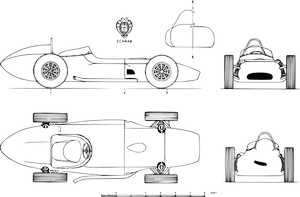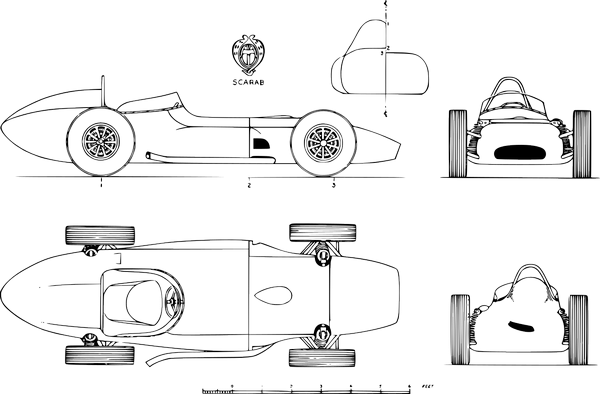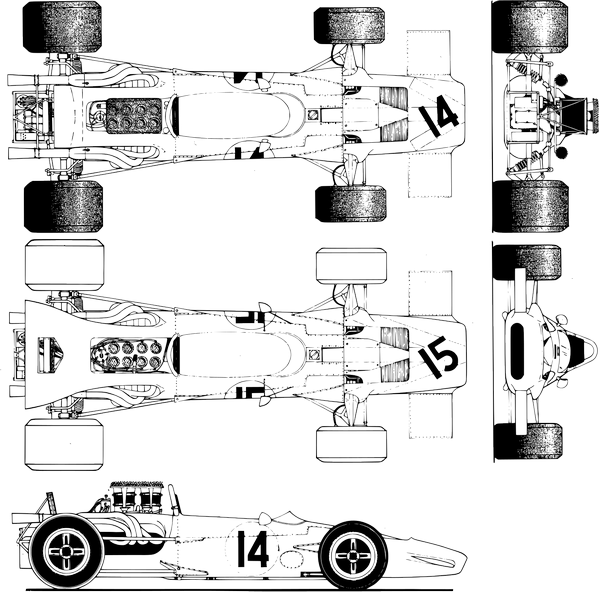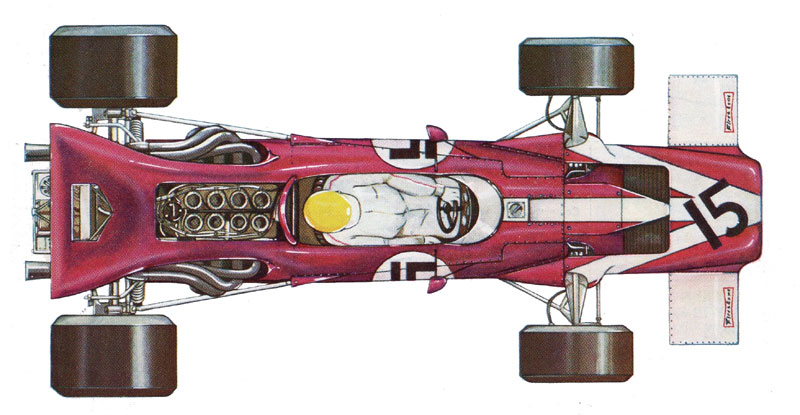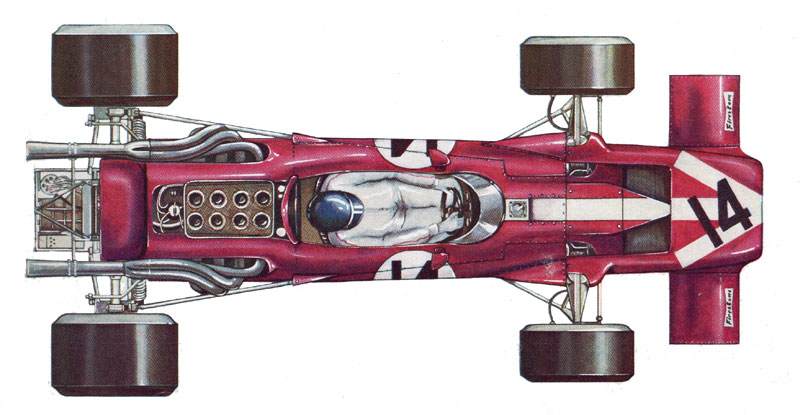Prototype Parade No. 101 | Model Maker August 1960 | Drawn & Described by Walkden Fisher
Scarab F1
D URING recent years there has been a dramatic rebirth of road racing in the United States, resulting in the fact that Grand Prix racing will be contested by an American racing car for the first time since the twenties.
The finance and unbounded enthusiasm of young Lance Reventlow, wealthy son of a very wealthy mother - Barbara Hutton, "Woolworth heiress" - is the guiding force behind the organisation of Reventlow Automobiles Incorporated, which he formed to build his own racing equipment. Scarab sports cars constructed by R.A.I. have proved highly successful in the States, and the decision was therefore made to design "monoposto" machines for G.P. contests, this being dictated by the lower costs inherent in the simpler layout of a Grand Prix car.
Inevitably, with so bold a design as the new Formula 1 Scarab, the Reventlow team of technicians met with many problems and difficulties. To enter international racing, R.A.I. required a new engine, and following a period of considerable research which included, among other assignments, the dissection and analysis of a Mercedes 300SLR, a power unit was evolved. This is a complex desmodromic valved, four cylinder, "on its side" engine developed by Leo Goosen, the former Offenhauser and Meyer-Drake expert. According to reports, the engine runs well and is turning out around 240 B.H.P., the same as the 2.5-litre Coventry Climax unit, and for 1961 a 12-litre engine is on the drawing board in readiness for the new formula.
On the Riverside circuit in California the 2½ litre Scarab prototype is often to be seen in action, and Chuck Daigh has improved his own lap record, set up with the 5½ litre Corvette engine sports Scarab on numerous occasions.
As in many Indianapolis cars, the drive line runs straight back along the left hand side, and the initial impulse in the Scarab comes from a Lockheed twin plate clutch mounted on a steel billet flywheel. A short, universal jointed drive shaft continues to the transmission, built in unit with the final drive and resting under the driver's left elbow, the cockpit itself being offset to the right of the centre line.

Halibrand wheels with Al-Fin drums are incorporated and designed to work, together with the backing plate, as a turbine system to throw heat away. The wheel rim shrouds helical finning on the outside of the drum, thus forming turbine rotor ducts which gain added efficiency from the stator effect of the backing plate. This effect is encouraged by the design of the spoked wheel, while not hindering the radiation of heat.
The frame of the Scarab is a very neat trussed layout of welded chrome molybdenum steel tubes of varying diameters with substantial cross-bracing. An unequal wishbone suspension system is fitted to all four wheels and a facile adjustability of camber through screw mountings for the ball joints allows quick adaptation to the character of each course without cumbersome changing of springs, etc. This is an idea which has been applied only recently to European racing cars but has been an American technique of long standing. Coil springs are utiliSed all around, with Monroe or Koni telescopic spring dampers, and as with the Scarab sports cars, on which it proved successful, steering is by modified Morris Minor rack and pinion gear.
Wind tunnel testing of a scale model refined the shape of the body shell and the result is an extremely handsome outline. Except for its upswept cowl and headrest, it is lower than the tops of its tyres, with purposeful lines full of distinction.
The sports Scarabs were finished in an attractive golden hue, and although America's international racing colours are white and blue, it is possible that Lance Reventlow may emulate Rob Walker by ignoring official colour regulations and decide to race the Fl Scarabs in the colour scheme used on his earlier cars. Be that as it may, it will be a very pleasing and welcome sight to see the new cars and colours, thinning out a little the greens and reds, on the starting grids of Europe!
The title "Scarab", which is an excellent choice for a name, is incidentally derived from the sacred beetle of the Egyptians, and if appearance is anything to go by the G.P. car bearing this name is assured of success! However, its potential must be regarded as an unknown quantity in international events, and as such, a period may elapse before R.A.I. can hope for some obvious triumphs, bearing in mind that it took years before the Vanwalls and Coopers won their first championship races.
The essential prototype dimensions are: Wheelbase-90 in.; track front-50 in., rear-48 in.; overall length-13 ft. 6 in.; overall height to top of head rest-2 ft. 11 in.; wheels—front 600 x 15, rear 650 x 15.

